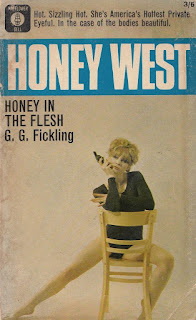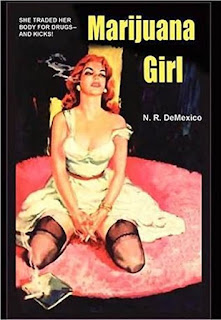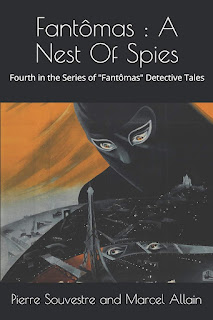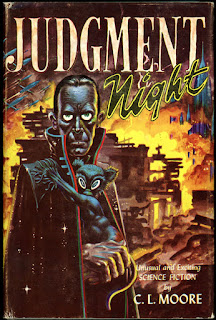Len Deighton (born 1929) made his reputation as a spy writer with his unnamed spy novels, starting with The Ipcress File in 1962. They’re often referred to as the Harry Palmer novels, Harry Palmer being the name given to the character in the movie adaptations starring Michael Caine.
How many of the unnamed spy novels there were is a controversial question. No-one disputes that The Ipcress File, Funeral in Berlin, Horse Under Water and Billion Dollar Brain belong to that series. It’s generally assumed that An Expensive Place To Die (1967) is another unnamed spy novel. There are those who believe that Spy Story (1974) is a sixth book in the series. It’s quite plausible that the protagonist of that novel is the unnamed spy, a few years older. It’s also possible, although slightly more controversial, that Twinkle, Twinkle, Little Spy is a seventh novel featuring the same protagonist. Deighton has always been somewhat cagey on the subject. The uncertainty about how many unnamed spy novels there were adds an extra touch of mystery which is quite fitting. A spy’s whole career is after all a series of deceptions and false identities. The protagonist of Twinkle, Twinkle, Little Spy generally behaves in a manner that is reasonably consistent with the theory that he’s the same man at a later stage of his career.
Twinkle, Twinkle, Little Spy starts in the Sahara Desert. The British spy who may or may not be the unnamed spy is working with CIA agent Major Mann. They have to meet a Soviet defector named Bekuv who is currently working as part of a Soviet scientific team in Mali.
The problems begin over the question of Bekuv’s wife. Bekuv has insisted that his wife be brought out of Russia to join him, but the CIA doesn’t have Mrs Bekuv. They tell Bekuv that she’s going to join him soon.
Bekuv has been working on masers but what he really cares about is extraterrestrials. He wants to contact them. He’s not a UFO nut. He seriously believes that contact with alien civilisations is possible. What Bekuv wants is money to work on his project for contacting these alien civilisations.
The CIA and the British Secret Service don’t care about masers or aliens. What they want is to plug a massive American security leak. Top secret scientific data is being obtained by the Soviets. The CIA and the British Secret Service believe that Bekuv can help to identify the source of the leak. From the beginning there is tension between Bekuv and the CIA. The CIA is undoubtedly lying to Bekuv, and he’s undoubtedly lying to them. He has an agenda, they have an agenda, and those agendas are hardly compatible. Getting the information they need from Bekuv is going to be a laborious process. Maybe he’ll be more co-operative when his wife joins him. But the arrival of his wife makes things much more complicated.
An added complication for the unnamed spy is Red Bancroft. She’s a beautiful American woman, a friend of Mann and Mann’s wife Bessie. What her involvement in the whole situation is not at all clear. What is clear is that the unnamed spy has fallen in love with her.
There are endless betrayals, and everyone involved seems to have a different agenda. The CIA is very interested in the 1924 Society, a group of scientists interested in extraterrestrials which may or may not be a KGB front. There’s also a high-powered Senate scientific committee, which could be the source of the leaks. Of course it’s also possible that the security leak comes from within the CIA.
Somebody is trying to kill Bekuv. It might be the KGB, or somebody else. There’s also the problem of Harry Dean, an old CIA buddy of Mann’s whose career ended under a cloud. He might be a double agent, or the KGB could be trying to frame him, or someone else could be trying to frame him. Then there’s Harry Dean’s ex-wife, who isn’t really his ex-wife, and her new husband who isn’t really her husband. They’re all mixed up in this operation.
Mann and the unnamed spy have a tense relationship made more tense by misunderstandings and personal feelings. They don’t hate each other. Maybe in some ways they like each other. They don’t trust each other. But nobody trusts anybody in this case.
The web of deceptions and tangled loyalties and betrayals and suspicions grows ever more complex.
The action takes place in the Algerian desert, in rural Virginia, in Washington, in Miami and in Ireland.
This is one of Deighton’s lesser known novels and you could make a good case that it’s unjustly neglected. It’s actually Deighton in top form. The betrayals are both professional and personal, with the personal factors being emphasised a bit more than in Deighton’s earlier books.
Twinkle, Twinkle, Little Spy is highly recommended.
The problems begin over the question of Bekuv’s wife. Bekuv has insisted that his wife be brought out of Russia to join him, but the CIA doesn’t have Mrs Bekuv. They tell Bekuv that she’s going to join him soon.
Bekuv has been working on masers but what he really cares about is extraterrestrials. He wants to contact them. He’s not a UFO nut. He seriously believes that contact with alien civilisations is possible. What Bekuv wants is money to work on his project for contacting these alien civilisations.
The CIA and the British Secret Service don’t care about masers or aliens. What they want is to plug a massive American security leak. Top secret scientific data is being obtained by the Soviets. The CIA and the British Secret Service believe that Bekuv can help to identify the source of the leak. From the beginning there is tension between Bekuv and the CIA. The CIA is undoubtedly lying to Bekuv, and he’s undoubtedly lying to them. He has an agenda, they have an agenda, and those agendas are hardly compatible. Getting the information they need from Bekuv is going to be a laborious process. Maybe he’ll be more co-operative when his wife joins him. But the arrival of his wife makes things much more complicated.
An added complication for the unnamed spy is Red Bancroft. She’s a beautiful American woman, a friend of Mann and Mann’s wife Bessie. What her involvement in the whole situation is not at all clear. What is clear is that the unnamed spy has fallen in love with her.
There are endless betrayals, and everyone involved seems to have a different agenda. The CIA is very interested in the 1924 Society, a group of scientists interested in extraterrestrials which may or may not be a KGB front. There’s also a high-powered Senate scientific committee, which could be the source of the leaks. Of course it’s also possible that the security leak comes from within the CIA.
Somebody is trying to kill Bekuv. It might be the KGB, or somebody else. There’s also the problem of Harry Dean, an old CIA buddy of Mann’s whose career ended under a cloud. He might be a double agent, or the KGB could be trying to frame him, or someone else could be trying to frame him. Then there’s Harry Dean’s ex-wife, who isn’t really his ex-wife, and her new husband who isn’t really her husband. They’re all mixed up in this operation.
Mann and the unnamed spy have a tense relationship made more tense by misunderstandings and personal feelings. They don’t hate each other. Maybe in some ways they like each other. They don’t trust each other. But nobody trusts anybody in this case.
The web of deceptions and tangled loyalties and betrayals and suspicions grows ever more complex.
The action takes place in the Algerian desert, in rural Virginia, in Washington, in Miami and in Ireland.
This is one of Deighton’s lesser known novels and you could make a good case that it’s unjustly neglected. It’s actually Deighton in top form. The betrayals are both professional and personal, with the personal factors being emphasised a bit more than in Deighton’s earlier books.
Twinkle, Twinkle, Little Spy is highly recommended.

.jpg)









